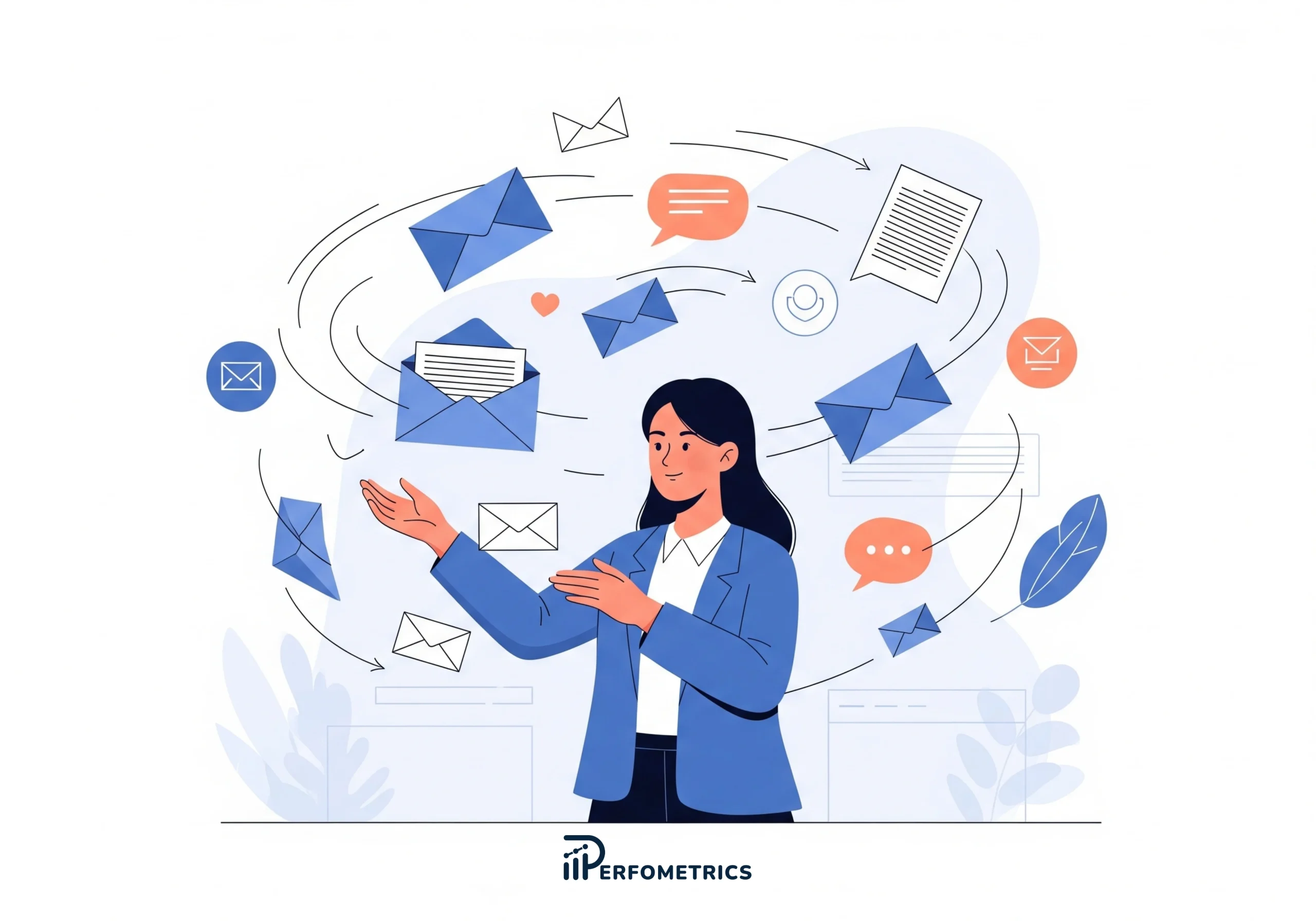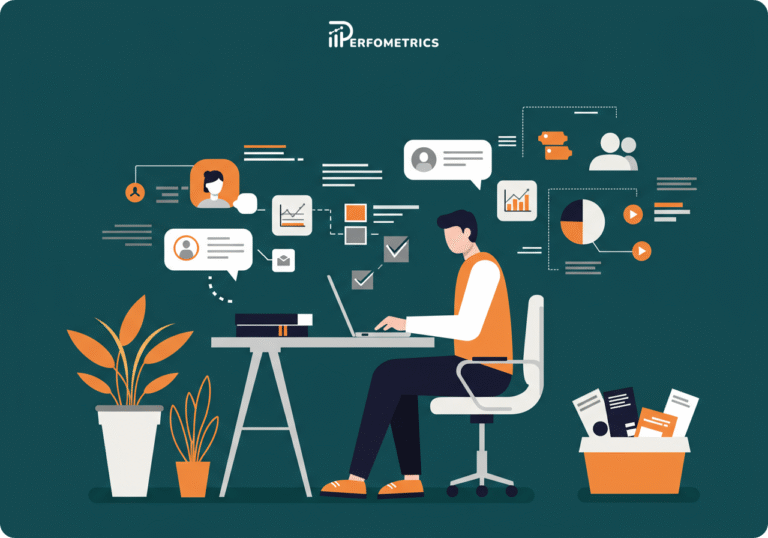Why Your Email List is Your Most Valuable Asset in 2025

Main Takeaways:
- Own Your Audience: True email list ownership is your most significant advantage over the “borrowed land” of social media platforms.
- Embrace the Future: A robust first-party data strategy, with your email list at its core, is the only way to thrive in a cookieless world.
- Nurture with Respect: Focus on ethical email personalization that provides genuine value, turning your inbox from a billboard into a sanctuary of trust.
- Measure What Matters: Look beyond conversions and track sophisticated subscriber engagement metrics to understand and grow the true value of your audience.
In the noisy, rented world of digital marketing, the quiet, direct, data-rich dialogue you build with your email list as a valuable asset will be your most enduring and powerful advantage.
The Anxiety of “Borrowed Land”
You feel it, don’t you? That slight unease every time a social media platform tweaks its algorithm. The scramble to adjust your strategy when organic reach suddenly plummets. It’s the unsettling realization that the audience you spent years building is on “borrowed land,” subject to the whims of a gatekeeper you don’t control.
For years, savvy marketers have known that an email list is important. We’ve all seen the impressive email marketing ROI statistics. As Shopify’s latest data for 2025 confirms, for every $1 spent, email marketing can generate an average return of a staggering $36. But in today’s digital landscape, simply knowing that email is a high-ROI channel is surface-level thinking. Its true value runs much, much deeper.
The conversation needs to evolve beyond open rates and click-throughs. If you’re still thinking of your email list as just a communication tool for sending promotions, you’re missing the most critical strategic shift in digital marketing today. Your email list is not just a tool; it’s your most valuable, appreciating digital asset. It’s your primary source of first-party data in a cookieless world, a direct line for priceless customer insights, and the absolute foundation for building a true, resilient community.
Own Your Audience, Own Your Future
Let’s start with the fundamental truth: Your email list is the one digital marketing channel you truly own. While social media shouts in a crowded public square, hoping to be heard over the deafening noise, email whispers in a private, one-on-one dialogue. Viral moments are fleeting, but a well-nurtured email list creates a consistent, intimate connection that builds lasting value.
This ownership gives you direct, unfiltered access to your most engaged customers. There are no algorithmic gatekeepers deciding who sees your message. This is a profound advantage. It removes the volatility of platform changes and puts you in complete control of your communication.
The Handshake, Not the Nod: The Highest Signal of Intent
Think about the signals you receive on different platforms. A “like” on social media is a fleeting nod of approval. A “follow” is a casual indication of interest. But an email subscription is a handshake. It’s a conscious, deliberate action. It is the clearest signal of intent you can receive—a prospect raising their hand and saying, “I’m interested. I trust you with my inbox. I’m ready for a deeper relationship.”
This foundation of trust is why email engagement is so powerful. As Omnisend’s 2025 statistics show, automated emails triggered by a user’s action (like a welcome email or abandoned cart reminder) can achieve open rates that are multiples higher than standard promotional campaigns. This isn’t a coincidence; it’s proof that communication built on user intent and trust drives incredible engagement.
Your Goldmine in a Cookieless Future: The Power of First-Party Data
For years, digital advertising has run on the fuel of third-party cookies, tracking users across the web to serve ads. That era is definitively ending. As platforms like Google phase out third-party cookies, the value of another type of data skyrockets: first-party data.
The Rise of the First-Party Data Strategy
As Salesforce compellingly argues in “First-Party Data: How You Can Succeed in a Cookieless World,” businesses that thrive in the next decade will be those with a direct, data-rich relationship with their customers. A first-party data strategy isn’t just a good idea; it’s a necessity.
So, what is the ultimate source of ethical, consent-based first-party data? Your email list.
This dramatically shifts the role of your email list from a simple communication channel to the central pillar of your entire personalization and advertising ecosystem. The question is no longer just, “How do we email these people?” but rather:
“How can we leverage our email list as a valuable asset to create robust first-party data sets that personalize the entire customer journey, even off-platform?”
Leveraging Your List Beyond the Inbox
The possibilities are transformative. The data and preferences willingly shared by your subscribers can be used to:
- Supercharge Your Advertising: Forget spraying and praying. You can upload segmented portions of your email list to advertising platforms to create highly effective lookalike audiences, reaching new prospects who share the proven characteristics of your best customers. This makes your ad spend dramatically more efficient.
- Personalize the Entire Journey: As CookieYes highlights in their “Cookieless Marketing” guide, email marketing is a cornerstone strategy. You can use the data from a subscriber’s engagement (what they click on, what they buy) to personalize your website experience in real-time when they visit, showing them content and offers relevant to their known interests.
- Inform Your Core Strategy: By analyzing which topics, products, and offers resonate most strongly with different segments of your audience, you gain invaluable insights that can and should inform your entire product development and content strategy.
The Inbox as a Sanctuary, Not a Billboard: The Ethics of Nurturing
Because a subscription is a handshake built on trust, every single email you send must earn its place in the inbox. As automation and personalization tools become more powerful, it’s dangerously easy to cross the fine line from helpful nurturing to intrusive tracking. This is where we must confront the ethics of our craft.
The Fine Line: Ethical Email Personalization vs. Intrusive Tracking
So, where is that ethical line? It lies in the value exchange.
Ethical email personalization uses data to deliver a more relevant, helpful, and timely experience that clearly benefits the subscriber. It feels like good service. Examples include:
- Helpful Follow-ups: Sending an email with a setup guide and user tips after someone purchases a complex product.
- Relevant Notifications: Alerting a subscriber when an item they viewed or added to a wish list is back in stock or on sale.
- Smart Segmentation: Ensuring announcements about a new service line only go to subscribers who have shown interest in that category, respecting the time of everyone else.
Intrusive tracking, on the other hand, feels like surveillance. The personalization serves only the marketer’s needs, creating a sense of being watched rather than being helped. The goal of ethical marketing should be to use data to serve your audience better, not just to sell to them more aggressively.
How to Nurture Ethically:
- Be Radically Transparent: Clearly state in your privacy policy and on sign-up forms how you intend to use subscriber data for personalization.
- Provide Obvious Value: Before implementing any personalized automation, ask: “Does this genuinely help the customer, or does it just help me sell?” The answer should be the former.
- Give Users Granular Control: Make it incredibly easy for subscribers to update their preferences, so they can choose what types of communication they receive.
More Than a List: Calculating the True Value of Your Compounding Asset
Too many businesses view their email list as a static tool for generating short-term sales. This perspective misses the single biggest opportunity: viewing your email list as a valuable asset that compounds over time. Every new, engaged subscriber adds to its value, which pays dividends for years if nurtured correctly.
To understand this, we have to look beyond simple acquisition and conversion metrics.
The True ‘Retention Cost’ of a Subscriber
The conversation often focuses on list growth, but what about the cost to prevent list decay? An unengaged subscriber isn’t “free.” In fact, they can actively harm you. A large number of inactive contacts damages your sender reputation, which hurts your deliverability and ensures that even your most engaged subscribers might not see your emails.
The “retention cost” is the ongoing investment required to keep your audience healthy and engaged. This includes the resources dedicated to:
- Valuable Content Creation: The time, effort, and money spent developing newsletters, articles, and resources that your audience actually wants.
- Segmentation & Personalization: The technology stack and man-hours needed to send the right message to the right person at the right time.
- List Hygiene: The process of regularly cleaning your list of inactive or invalid subscribers to maintain a high sender score and protect deliverability.
Understanding this retention cost forces a crucial shift from a “quantity over quality” mindset to one focused on building and maintaining a healthy, appreciating asset.
Measuring What Matters: Valuable Subscriber Engagement Metrics Beyond the Conversion
If your success is only measured by sales from the last email blast, you’re missing a huge piece of the value puzzle. Your email list is one of the best, most direct market research tools at your disposal. The critical question to ask is:
“What are the most valuable non-conversion subscriber engagement metrics we should be tracking?”
As sources like Rasa.io and Abmatic AI point out, using your email list for market research is a powerful, often underutilized strategy. Consider the immense value of:
- Direct Feedback & Insight Generation:
- What to track: Survey response rates, direct replies to emails, poll results within newsletters.
- The value: Instead of guessing, you can ask your subscribers what they want to see next, what problems they’re facing, or what they think of a new product idea. A SaaS company could use a one-click poll in their newsletter to let their most engaged users vote on the next feature to be developed, ensuring their product roadmap is aligned with customer needs.
- Community Building & Brand Advocacy:
- What to track: Email forward rates (“Forward to a Friend”), social shares originating from email links, user-generated content submitted via email campaigns.
- The value: You can turn subscribers into true brand advocates who champion your brand organically, creating a powerful and authentic marketing force.
- Long-Term Customer Value:
- What to track: Repeat purchase rate by email subscriber cohort versus non-subscribers, correlation between high email engagement and higher customer lifetime value (LTV).
- The value: This directly connects email engagement to long-term profitability, proving its value far beyond a single transaction.
Your Most Valuable Asset is Waiting
It’s time. Time to stop treating your email list like a simple promotional tool and start managing it like the strategic, compounding, and defensible asset it truly is.
Ready to unlock the true potential of your email list and build a future-proof marketing strategy? The team at Performetrics specializes in helping businesses audit and optimize their email marketing and first-party data readiness.
Contact us today for a strategic consultation. Let’s work together to turn your list into your most powerful growth engine.
Further Reading & Resources
For a deeper dive into the concepts discussed in this article, we highly recommend the following sources:
- On Email Marketing ROI and General Value:
- Shopify. “You Should Know These Email Marketing Stats in 2025”. https://www.shopify.com/blog/email-marketing-statistics
- Omnisend. “Email Marketing Statistics 2025: Key Insights”. https://www.omnisend.com/blog/email-marketing-statistics/
- On Email’s Role in a Cookieless Future (First-Party Data):
- Salesforce. “First-Party Data: How You Can Succeed in a Cookieless World”. https://www.salesforce.com/blog/first-party-data/
- CookieYes. “Cookieless Marketing: 7 Strategies to Stay Ahead in 2025”. https://www.cookieyes.com/blog/cookieless-marketing/
- On Using Email for Research and Insights (Beyond Conversion):
- Rasa.io. “Using Email Marketing for Market Research”. https://rasa.io/pushing-send/using-email-marketing-for-market-research/
- Abmatic AI. “The benefits of using email marketing for market research”. https://abmatic.ai/blog/benefits-of-email-marketing-for-market-research



